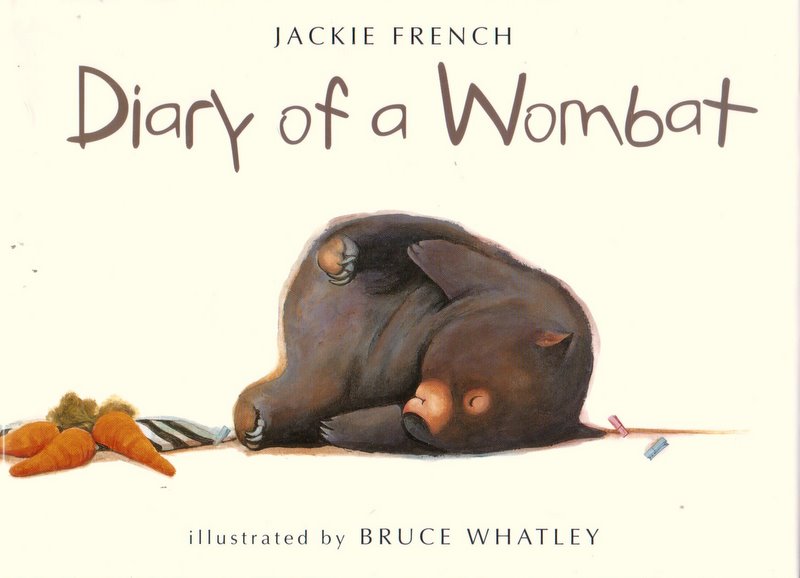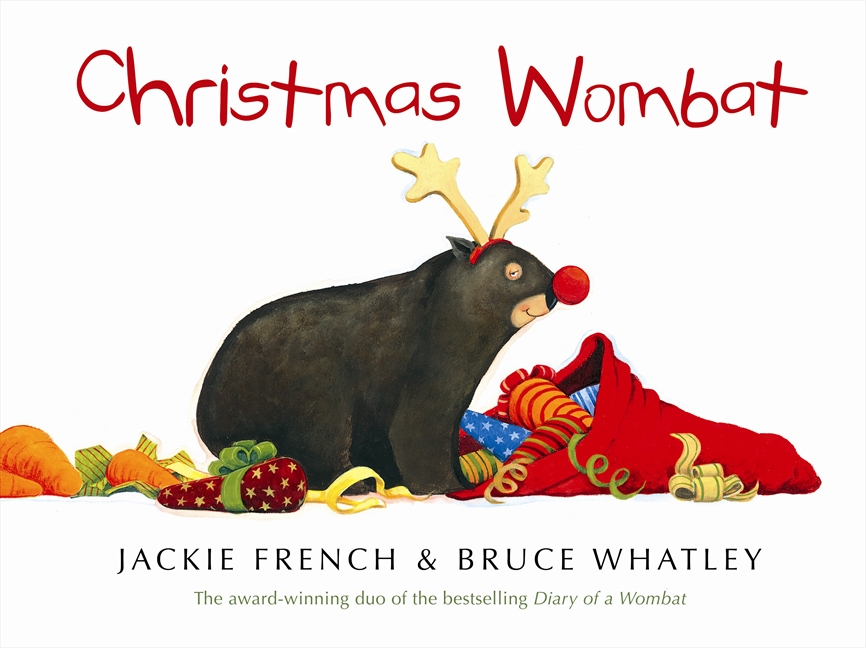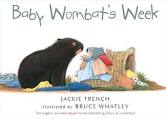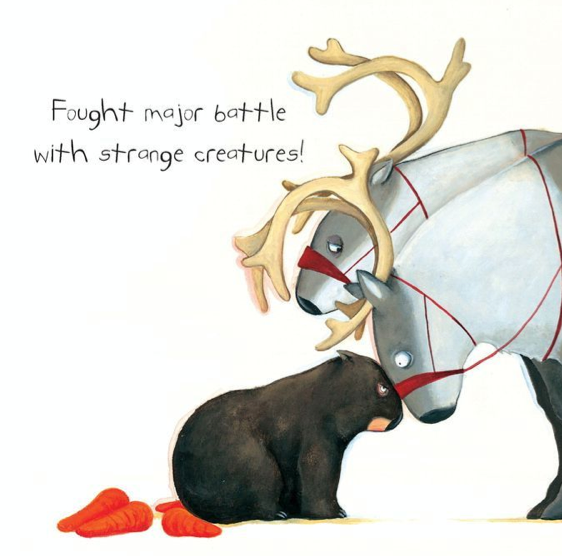When you think of picture books, what are some of the great memories that come to your mind? Snuggling with grandma? Daddy'd tender voice as he read a bedtime story to you? Perhaps laughing with Mum as she read your favourite story but skipped a page hoping you wouldn't notice, (but of course you did, you knew every word by heart).
Every child has a favourite. One that they want read to them night after night. Kept under their pillow or hidden in reach under their bed.
My all time favourite is "Diary of a Wombat" by Jackie French  (I've mentioned it in my blogs before). I've read it over and over to so many children during my teaching career, unfortunately I think I've lost my copy in a classroom somewhere and it was personally autographed by Jackie too! I do however still have "Christmas Wombat"
(I've mentioned it in my blogs before). I've read it over and over to so many children during my teaching career, unfortunately I think I've lost my copy in a classroom somewhere and it was personally autographed by Jackie too! I do however still have "Christmas Wombat"  and "Baby Wombat's Week"
and "Baby Wombat's Week"  so I am lucky to be able to re-read these whenever I like. As I guess you can see, I rather have a fondness for wombats. They are Australia's unsung heroes, cute and cuddley yet almost forgotten due to the popularity of koalas and kangaroos. Thanks to Jackie French and her wonderful tales wombats are finally getting the recognition they so rightfully deserve, but I digress.
so I am lucky to be able to re-read these whenever I like. As I guess you can see, I rather have a fondness for wombats. They are Australia's unsung heroes, cute and cuddley yet almost forgotten due to the popularity of koalas and kangaroos. Thanks to Jackie French and her wonderful tales wombats are finally getting the recognition they so rightfully deserve, but I digress.
Picture books are our introduction into the wonderful world of imagination and reading. We learn so much more than you might initially think from them.
From the first time we hold a picture book in our hands we begin the early stages of reading. We immediately learn the correct way to hold a book to be able to read it up the right way and from the front to the back. As we listen to an adult read the few words on each page we see to read from left to right. We see the shape of sentences and listen to the sounds of the written language. We also unknowingly begin to learn the fundamental structure of sentence building as well as the more complicated structure of the spoken language itself as we listen to someone read to us over and over again.
We learn that marvelous stories can be told on the pages of books and that we can explore all sorts of magical and mystical worlds through words and pictures.
We also come to realise that the story can be told through the amazing illustrations making it possible to understand the story without reading the words. This then helps in the following stages of learning to read as we search the pictures for cues to help with words by looking at expressions, body language or other clues that might be in the images. For example in "Christmas Wombat" the text talks about the strange creatures that are eating the wombats carrots, but by looking at the illustrations it is clear the creatures are in fact Santa's reindeer.
Often a joke or a visual hint may be in the illustration that may not be obvious in the written word demonstrating the visual impact the pictures can have on the story. In "Baby Wombat's week" the wombat is searching for a new bigger home, the illustrations show us some of the places he considers, such as the toddlers sandpit, the garbage bin and a washing basket.
Of course the key to successful learning to read is as much in the conversation that develops about what happens in the story in as much as reading the text or looking at the pictures. A picture is after all worth a thousand words, and a good illustration can tell an incredible story in its own right. Picture books can help to stimulate discussions between parents and children where as more complicated text may reduce the need for that dialogue unless the parent is proactive.
Picture books come in all shapes and sizes but some of the best are the biggest, brightest and most colourful. They stimulate the imagination and are family inclusive. Everyone can snuggle behind a big picture book and easily read together. Why not pop on down to your local library today and see what amazing adventures await you and your family amongst the pages of a big picture book.
As always, have fun reading. :)
